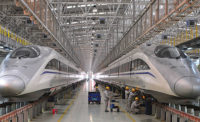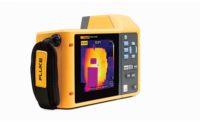Thermal, Mechanical or Chemical?
Every engineer knows threaded fasteners are the preferred joining method if the parts must later be disassembled for service. Similarly, every engineer knows adhesives are ideal for joining dissimilar materials, and welding usually produces the highest strength joints.
So how would you assemble a sheet-metal box to house electrical components? That’s easy, you say. Plenty of mechanical methods would work: screws, rivets, snap-fits, even toy tabs. Yet, other engineers might prefer spot welding, and at least one manufacturer of such enclosures uses adhesives. Perhaps it’s not such an easy decision after all.
Indeed, the choice of thermal, mechanical or chemical joining methods is not always clear. Beyond product performance issues, many factors affect the decision, including cost, cycle time, aesthetics and even personal experience. And, as advances are made in each joining technology, the distinctions between them are becoming increasingly blurred.
Chemical
Perhaps no other joining method has made more in-roads into its "competition" than adhesives. For example, adhesives are encroaching on rivets in automotive structural applications. 3M Co. (St. Paul, MN) makes a double-sided, acrylic adhesive tape that is strong enough to attach aluminum panels to steel posts in truck trailers.Similarly, threaded fasteners are no longer the only solution if the assembly will require service. EIC Laboratories Inc. (Norwood, MA) makes an epoxy that disbonds from a metal surface when an electrical current passes across the joint interface. Many silicone gasketing materials have excellent tension, compression and sheer strength, but have relatively weak peel strength, so the parts can be pried apart for service.
Overall, the biggest advantage of adhesives is their ability to join dissimilar substrates, says Patrick J. Courtney, engineering project manager with Loctite Corp. (Rocky Hill, CT). Resistance welding can join different metals, and ultrasonic welding can join different plastics. However, those techniques perform better if the substrates are readily miscible. Mechanical fasteners can join dissimilar metals, but galvanic corrosion may be a concern.
Adhesives are also good for joining sensitive materials, says Kathy Lewis, technical development manager at Vantico Inc. (Los Angeles). "Adhesive bonding does not require high temperatures," she says. "Many adhesives cure at room temperature. If your materials are heat-sensitive, prone to distortion, or have different coefficients of thermal expansion, you don’t want to weld them."
Another advantage of adhesives is that they produce a continuous joint, says Lewis. Bonded joints are stiffer, and stresses are more uniformly distributed across the bond area. As a result, fatigue cracks are less likely to occur. Spot welds and mechanical fasteners concentrate stress locally. A continuously welded joint also spreads stress uniformly, but the metal in the heated zone may be less strong than the parent materials.
"The strength of a joint is measured in pounds per square inch," Lewis explains. "The more square inches the joint covers, the fewer pounds of force you need to hold it together."
Because adhesives produce a continuous bond, they reduce vibration and sound. The assembly is also sealed and leak-proof. Moisture can penetrate joints assembled with mechanical fasteners. In fact, the need to seal an assembly was why one manufacturer switched from rivets to adhesives for assembling metal electrical enclosures, says Courtney.
"The adhesive sealed the entire joint, so nothing could get inside the enclosure," he recalls. "It also cut manufacturing time, because the company didn’t have to drill holes for the fasteners."
Bonded joints have a neat appearance, says Courtney. There are no protruding fasteners and no weld marks. In fact, cosmetics was a major reason why one manufacturer switched from spot welding to adhesives for assembling truck cabs.
"Welding certainly produced a high-strength joint, but the manufacturer had to sand and polish the joint to get an acceptable appearance before painting," Courtney recalls. "By switching to an adhesive, the company eliminated that extra step. The [assembly] still needed a couple of spot welds, but compared with how it was done before, the company reduced manufacturing time quite a bit."
Adhesives simplify assembly by replacing several fasteners with a single bond or by allowing several components to be joined in one operation, says Lewis. And, eliminating fasteners lowers product weight.
Many adhesives are electrically insulating, adds Lewis. "This prevents galvanic corrosion," she says. "It also enables you to isolate an electric circuit from the rest of the assembly."
Like mechanical fasteners, adhesive bonding is a relatively flexible joining method, says Courtney. If the part changes, it’s easy and inexpensive to change the pattern in which the adhesive is dispensed. In contrast, changing the tooling for some welding applications can be costly.
Adhesives do have limitations, Lewis points out. Compared with other joining methods, adhesive bonds are less temperature-resistant. In some cases, chemical resistance is also a concern. "Some adhesives are more chemical-resistant than others, but they are also more expensive, too," she says.
Depending on the material, cycle time can be an issue with adhesives. "Mechanical fastening and welding are done instantly," Lewis says. "With adhesives, you have to allow for curing time."
Another potential problem is the cleanliness of the parts. For ideal wetting, the parts may need to be cleaned or primed before bonding.
Like welding, adhesive bonding is not too forgiving. If a bad joint is made, it’s often impossible to correct. Bonded joints are not easily disassembled.
Thermal
Like adhesive bonding, welding is encroaching on applications once thought strictly the province of mechanical fasteners. In the automotive industry, for example, welding has always been used to assemble car frames and mufflers. But what about instrument panels? Aren’t those best assembled with screws?Not so fast, says Jeffrey Frantz, director of applications and acoustic tooling at Branson Ultrasonics Corp. (Danbury, CT). His company has supplied hot plate and vibration welders to assemble many large automotive components, such as instrument clusters and bumpers.
"Automotive assemblies go through a lot of vibration and thermal cycling," he explains. "In that environment, fasteners typically loosen up over time and create a rattle. And eliminating rattles is a key quality issue with auto manufacturers."
The biggest advantage of welding is that it provides a permanent joint. Indeed, welded parts are, by definition, one entity. And, depending on whether a filler metal is used or if the substrates are changed by the heat, the joint can be as strong or stronger than the parent materials.
Welding is usually the most economical way to join components in terms of material usage and fabrication costs, says Frantz. Most welding methods, such as ultrasonic welding and resistance welding, do not require filler metals, so there’s no cost associated with consumables and little or no weight is added to the assembly. Moreover, mechanical joining methods may require additional operations, such as drilling holes, before they can be performed.
Another advantage of welding is speed. "Welding is extremely fast," says Frantz. "There’s no set-up or cure time. As soon as the weld cycle is completed, the joint is finished and the product can be used or tested on the spot."
Welding is both forgiving and unforgiving. Unlike adhesive bonding, most welding methods are unaffected by contaminants on the parts, says Frantz. But, like adhesive bonding, once parts are welded, they can’t be disassembled.
There are other disadvantages to welding. Most welding operations require high energy and are inherently dangerous. In addition, detecting defects in welded joints can someArial be difficult.
Unlike adhesives and fasteners, welding can’t join dissimilar materials. "You can’t weld plastic to metal, or metal to glass," says Frantz. "The materials have to be compatible."
Volume is another consideration. With many types of welding equipment, the parts that contact the assembly are custom-made. "If you’re making 10 parts per year, it’s difficult to justify the cost of the tooling," says Frantz. "But, if you’re making 150,000 parts per year, then it’s easy to justify the cost of a $10,000 welder."
Although most welding operations are easily automated, some must be performed manually and that can be expensive. Many welding operations are considered skilled trades and incur high labor costs.
Mechanical
Mechanical fasteners have always been the dominant joining method, and they will remain that way despite competition from adhesive bonding and welding. Many manufacturers simply don’t trust other joining technologies. Product quality and durability concerns keep many manufacturers using threaded fasteners, even though they would like to abandon them for assembling some products. And, the need to disassemble products for service and recycling will always favor the threaded fastener."The biggest advantage of threaded fasteners as a joining method is that it’s the most readily disassembled," says Jess Comer, assistant professor of mechanical engineering at Iowa State University (Ames, IA). "It’s also arguably the strongest joining method. The highest integrity joints tend to use threaded fasteners. And finally, there’s just a very high confidence level with fasteners, compared with other joining methods."
The technology for mechanical fastening is simple. Joints can be designed with little trial and error, and fasteners can be installed quickly and easily by unskilled workers without a lot of special tooling or fixtures. Once the fasteners are installed, the results are easily inspected.
In some cases, the use of fasteners is dictated by more than just the need for disassembly. The aerospace and pressure vessel industries mandate fasteners for certain applications. And some products, such as disk drives, can’t be assembled any other way.
"Disk drives have to be very clean," says Rick Bridegan, director of sales for Unisteel (Broken Arrow, OK), a supplier of stainless steel fasteners for the electronics industry. "Welding won’t work, because it generates particulates. Adhesives won’t work because they tend to outgas as they cure."
Besides low vibration resistance, the main disadvantage of fasteners is cost. All things being equal, engineers strive to eliminate as many fasteners from their products as possible. This is done not so much to reduce the cost of the fasteners, as it is to reduce the cost of installing them. To maximize productivity and minimize cost, the best assembly is often no assembly.
Looking for a reprint of this article?
From high-res PDFs to custom plaques, order your copy today!





